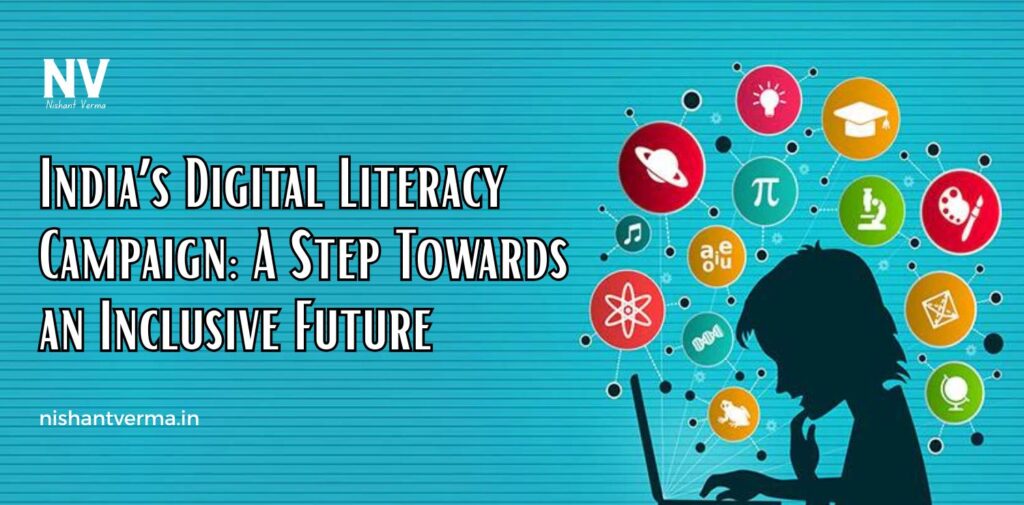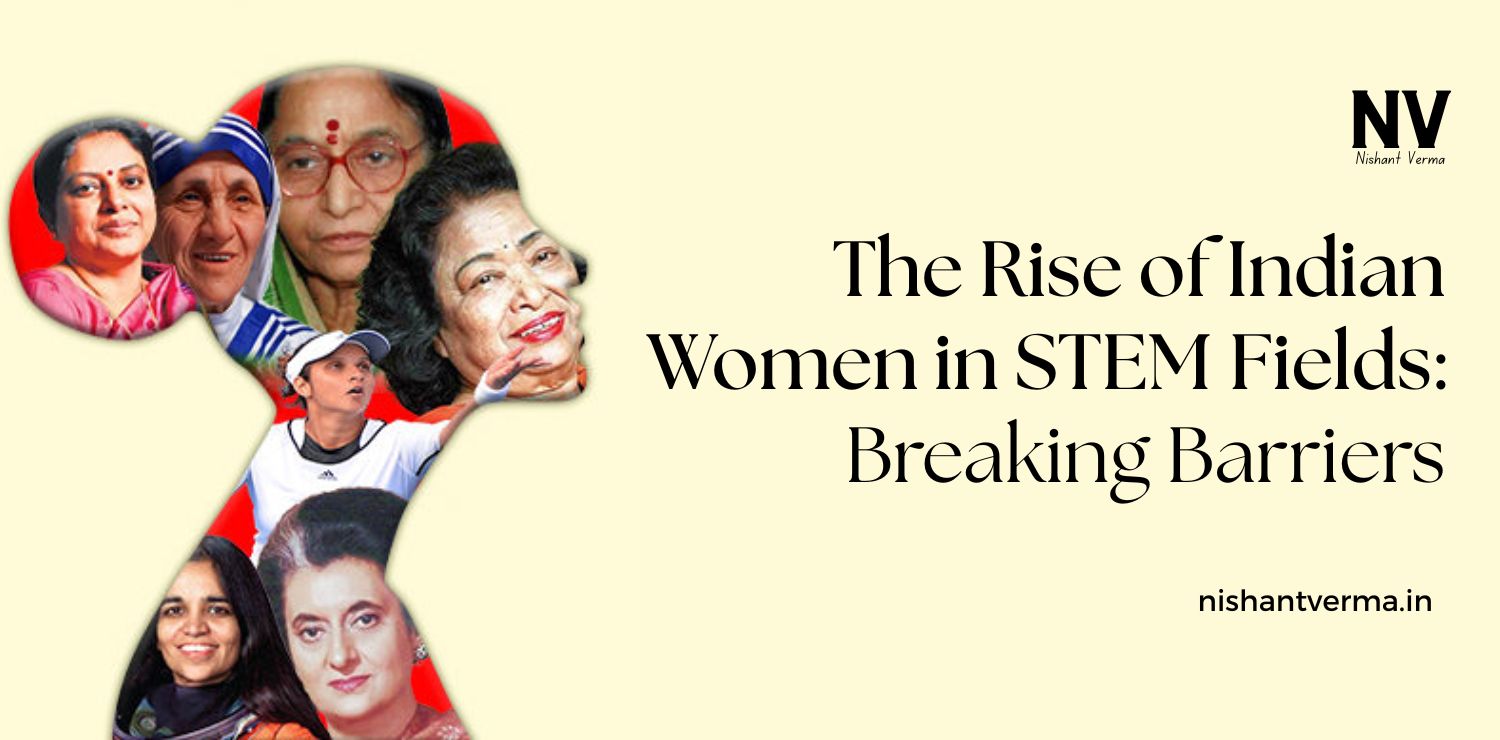In today’s world, technology is all around us. From smartphones and computers to the internet and social media, digital tools are shaping the way we work, learn, and communicate. Yet, despite the increasing role of technology in our daily lives, millions of people in India still lack the skills to use these digital tools effectively. Recognizing this gap, the government has launched the India Digital Literacy Campaign to empower citizens with the necessary skills to navigate the digital world. This initiative is a crucial step towards making India a more inclusive and connected nation.
What is Digital Literacy?
Digital literacy refers to the ability to use digital devices, such as smartphones, tablets, and computers, to access, understand, and create information. It involves not only knowing how to use basic digital tools but also having the skills to protect personal data, stay safe online, and use the internet for learning and personal growth. Digital literacy is essential in the modern world because so many aspects of life now depend on technology.
For example, students need digital skills to access online education resources, job seekers need them to apply for jobs, and businesses need them to promote their products and services. Without digital literacy, many people are at risk of being left behind in the digital age. This is why the government’s Digital Literacy Campaign is so important.

The Need for Digital Literacy in India
India is a country with over 1.4 billion people, and while the nation has made remarkable progress in the digital space in recent years, there are still millions of people, especially in rural areas, who lack access to digital resources and skills. According to a report by the Ministry of Electronics and Information Technology, more than 50% of the population in India does not have basic digital literacy.
Many of these individuals are from underprivileged backgrounds and may not have access to the internet or the necessary devices to learn digital skills. Moreover, a lack of awareness about the benefits of technology prevents people from embracing the digital revolution. As a result, there is a significant digital divide between urban and rural areas, rich and poor, and young and old.
To bridge this divide and make sure everyone has equal access to opportunities, the government launched the Digital Literacy Campaign. The goal of this campaign is to ensure that every citizen, regardless of their background or location, has the skills to use technology in a meaningful way. This will help people improve their lives, find better job opportunities, and contribute to the nation’s overall progress.
The Goals of the Digital Literacy Campaign
The primary goal of the Digital Literacy Campaign is to make India digitally literate by teaching citizens how to use digital tools effectively. The initiative has several objectives, including:
- Empowering citizens: The campaign aims to equip people with the skills needed to use the internet for a variety of purposes, such as education, healthcare, communication, and entertainment.
- Promoting digital inclusion: By reaching out to rural and underserved areas, the campaign seeks to ensure that no one is left behind in the digital age. It focuses on marginalized communities, women, and senior citizens.
- Boosting economic opportunities: Digital literacy opens up new job opportunities and allows individuals to work remotely, access online training programs, and participate in the digital economy.
- Enhancing government services: Digital literacy enables people to access government services online, such as applying for benefits, paying taxes, and accessing public records, making governance more transparent and efficient.
- Promoting online safety and security: The campaign also aims to teach people how to protect themselves online and avoid digital fraud, identity theft, and cyberbullying.

Key Features of the Digital Literacy Campaign
The Digital Literacy Campaign is being implemented across India with the help of various government and non-government organizations. The campaign offers training programs, workshops, and online resources to teach people how to use digital tools effectively. Some key features of the campaign include:
- Training programs: The government has partnered with several organizations to offer training programs that teach basic digital skills, such as how to use a computer, browse the internet, send emails, and use online banking services. These programs are available in different languages and are designed to be simple and easy to understand.
- Targeted outreach: The campaign specifically targets rural areas and underprivileged communities that may not have had access to digital education in the past. Special focus is given to women, senior citizens, and differently-abled individuals, ensuring that everyone can benefit from the program.
- Digital learning resources: The campaign offers free or low-cost access to digital learning resources, including online tutorials, videos, and step-by-step guides. This makes it easier for people to learn at their own pace, even in the comfort of their own homes.
- Collaboration with local organizations: The government is working with local NGOs, educational institutions, and businesses to spread awareness and provide training on digital literacy. These collaborations ensure that the initiative reaches as many people as possible.
- Certificates and recognition: Participants who successfully complete the training programs receive digital certificates, which can add value to their resumes and help them in their job search.

Challenges Faced by the Digital Literacy Campaign
While the Digital Literacy Campaign has made significant progress, there are still several challenges that need to be addressed to make the initiative even more successful. Some of these challenges include:
- Lack of infrastructure: In rural areas, access to reliable internet and digital devices remains a major barrier to digital literacy. Many villages still struggle with poor internet connectivity, which makes it difficult for people to take part in online training programs.
- Language barriers: India is a multilingual country, and not all digital resources are available in local languages. This can make it difficult for people in remote areas to access training materials or understand technical content.
- Awareness and motivation: Many people are still unaware of the benefits of digital literacy, and some may be hesitant to embrace technology due to fear or lack of confidence. Overcoming these barriers requires continuous awareness campaigns and encouragement from community leaders.
- Cost of devices: While many people in urban areas may have access to smartphones and computers, the cost of devices remains a challenge for people in rural areas. Ensuring affordable access to technology is essential for the success of the campaign.
The Way Forward: India Digital Literacy Campaign
Despite the challenges, the Digital Literacy Campaign has made impressive strides in improving digital skills across India. To ensure the campaign’s success, the government must continue to focus on improving infrastructure, addressing language barriers, and making devices more affordable. Collaboration between government agencies, private companies, and local communities will be key to ensuring that everyone, regardless of their background or location, has the opportunity to become digitally literate.
As more people gain digital skills, they will be able to unlock new opportunities for personal and professional growth. Digital literacy is not just about learning how to use technology; it is about creating a more inclusive society where everyone has the tools to thrive in the digital age.
India Digital Literacy Campaign is a step towards a brighter, more inclusive future. By empowering citizens with digital skills, the country is paving the way for greater economic development, social equality, and improved governance. As we move forward, it is crucial that we continue to prioritize digital literacy as a fundamental right, ensuring that no one is left behind in the digital revolution.




